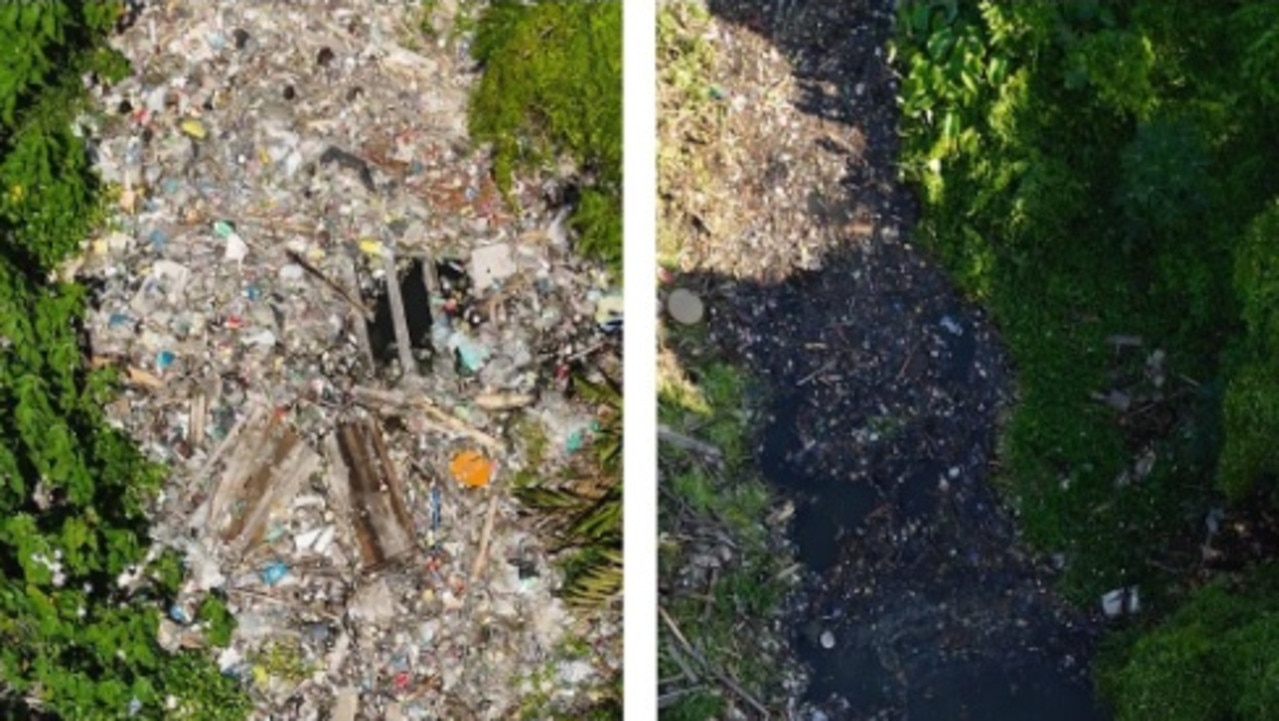Fury as Bali hotspot to drastically change
Locals and tourists have slammed controversial works at a popular site as they claim it will negatively impact the area.
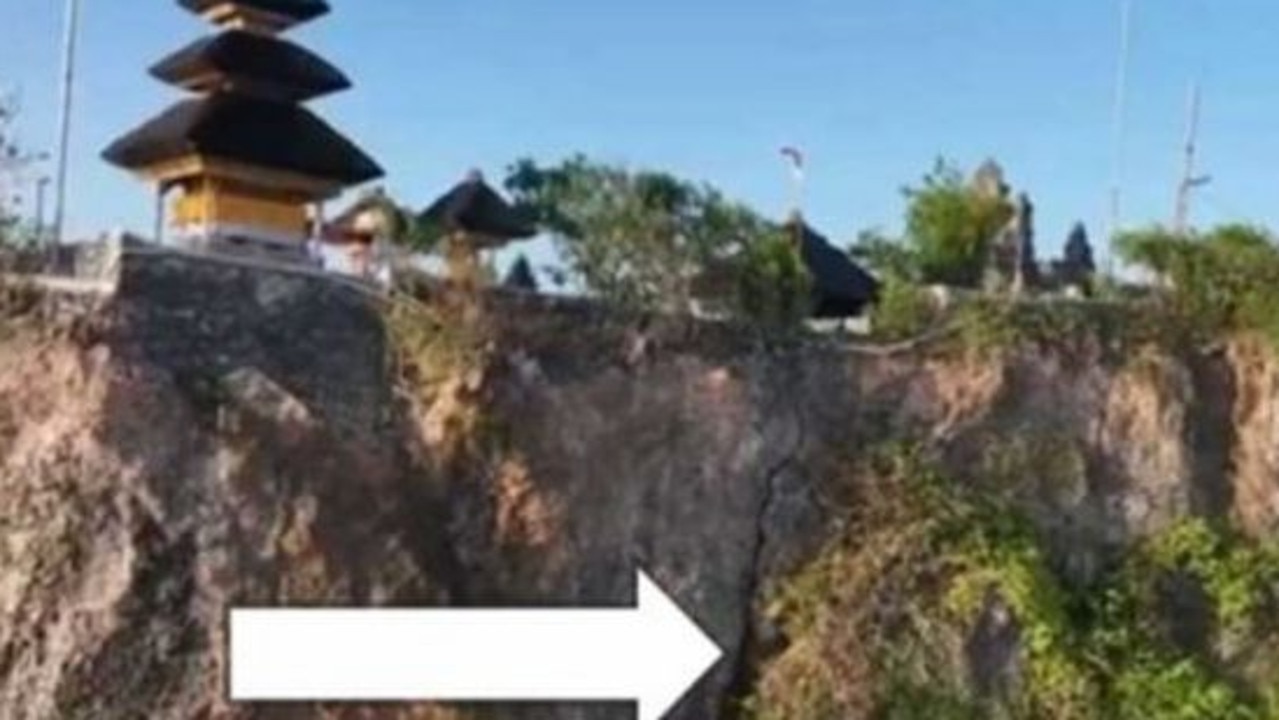
Construction for a new coastal road and 25m seawall above Bali’s iconic surf break in Uluwatu has caused outrage from people who say it will destroy the site.
The $AU7 million preservation project initiated by the Indonesian government is designed to protect Uluwatu temple — one of the most popular temples for tourists in Bali.
The well-known cliff face on which the temple is perched has reportedly been impacted by large cracks.
Already, 60 per cent of the project has been completed with the government arguing it will help ensure that cracks in the cliff do not become dangerous to the temple’s foundations and the public.
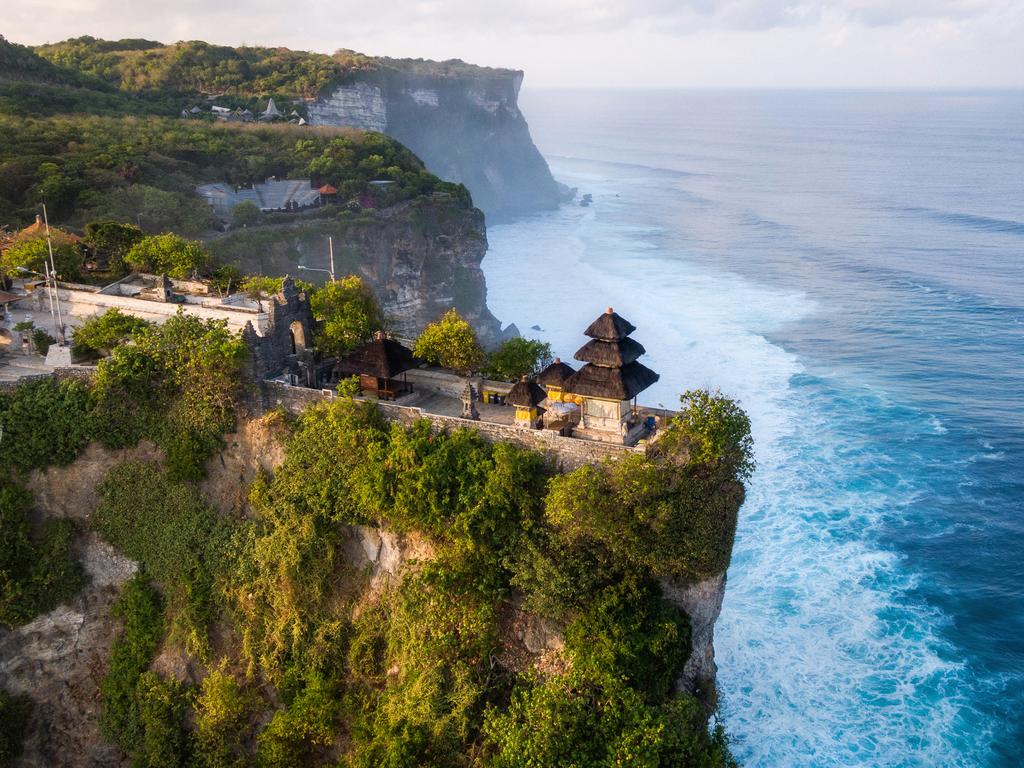
But not everyone is happy about it and have argued there are other ways to protect the temple without comprising the area’s natural character, environmental and marine impacts.
Video footage of construction works has gone viral this week, with the clip showing heavy machinery levelling the cliff face for the coastal road as large pieces of rock fall into the surf below.
Surfers argue the new coastal road will encroach on several of Uluwatu’s less-frequented surf spots — Secrets, Lurches, and temples.
“This would involve manipulating and paving the reef to achieve structural stability — a move that would inevitably impact the surrounding waves,” popular surf mag, Stab, reported.
“Additionally, the section of the reef closest to the temple is said to be a critical breeding nursery for manatees and spinner sharks.”
It claims that when development began, no ecological assessment had been made public, nor had authorities announced their plans until they had already started clearing the land for machinery.
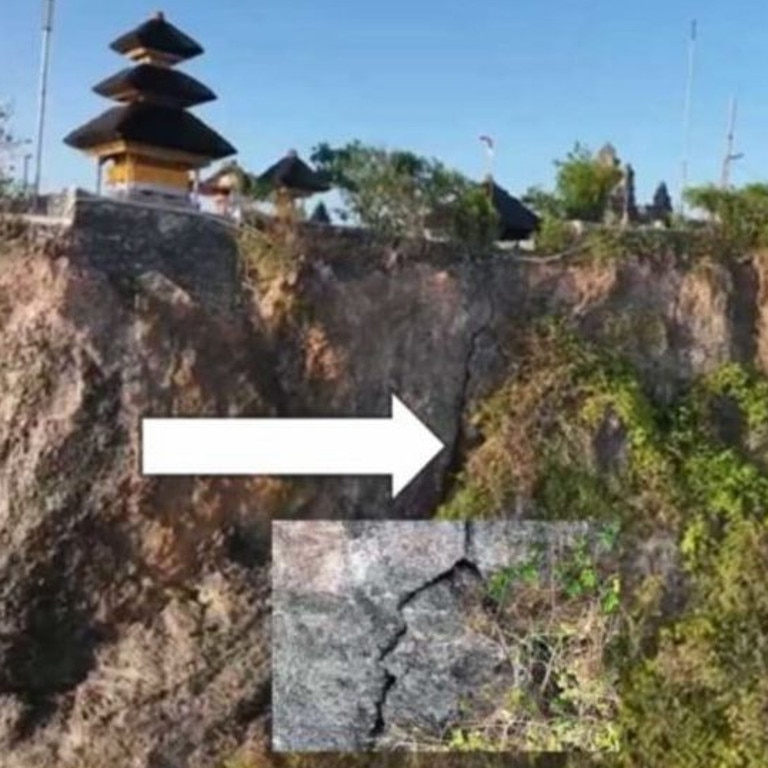
“It wasn’t until CGI footage was released and diggers started tearing through the jungle above the cliff face — eventually reaching the waterline and making their actions visible to surfers below — that the scale of the development became clear,” the magazine added.
Another clip also showed what the completed works will look like.
“Is this really the right way to try and protect the temple?” the caption reads.
The clip shared by Bali Livin has been viewed almost 1 million times and has attracted more than a thousand comments.
“The Balinese government is ruining that place. Not the tourists,” one person wrote.
According to the surf mag, Rama Putra, who is the current head of the Water Resources Department at the Badung Public Works and Spatial Planning Office, said the action is a response to an “emergency situation”.
“We are confident that we will receive full support because this work is in the public interest,” Mr Putra said.
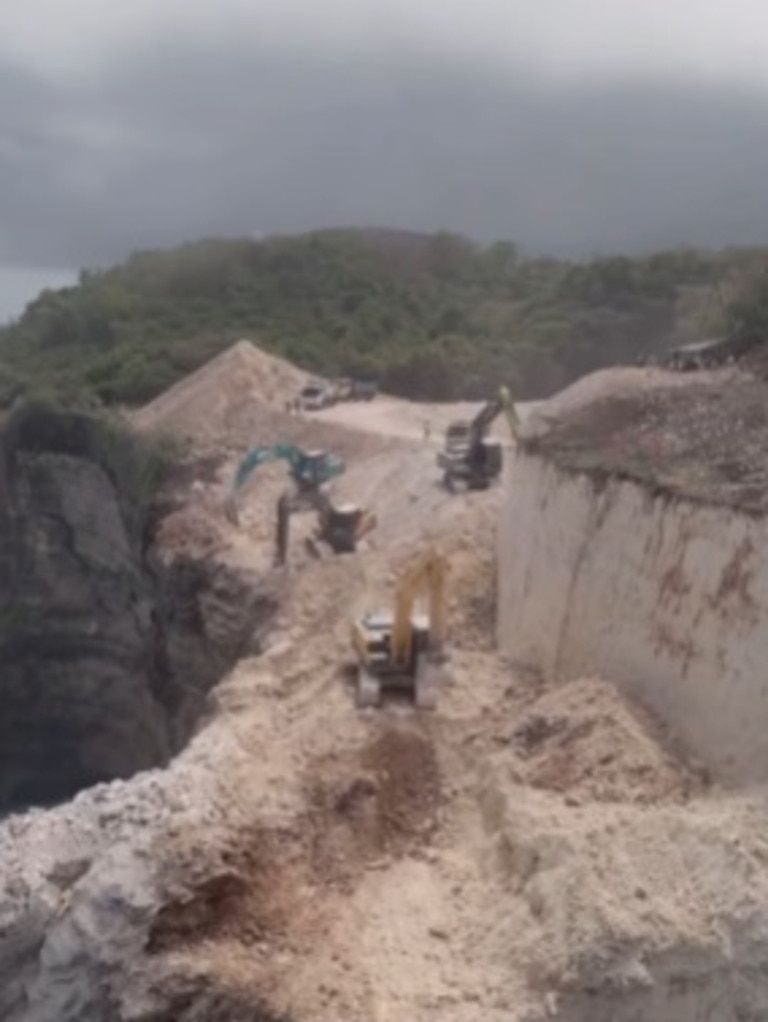
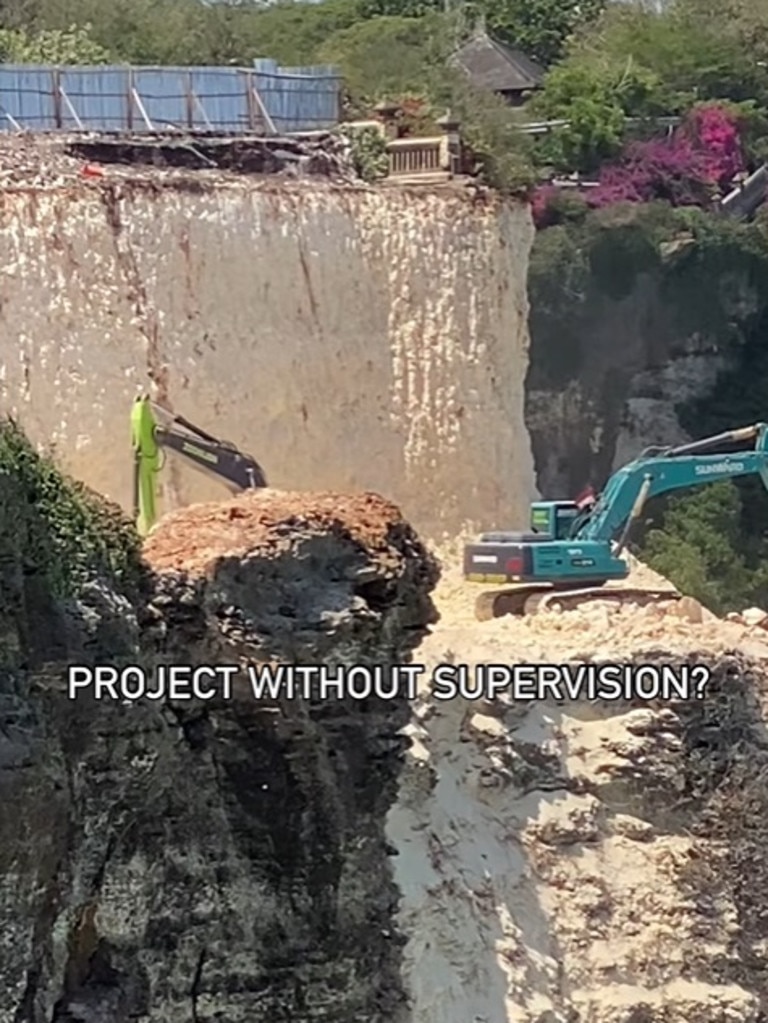
He reportedly claimed there had been intensive co-ordination between numerous organisations, including the Bali Penida River Basin Office and the Ministry of Marine Affairs and Fisheries, in order to ensure that the project is completed smoothly with the support of various parties.
He said the overall initiative is to overcome the impact of the impact of waves, which have the potential to further damage the cliff structure.
Others have taken to social media in support of the government’s controversial move.
“Hi Folks, Please Don’t judge the book by it’s cover (sic). Might be some of you don’t know there is a serious crack in between the main temple and the entrance of Uluwatu temple,” one person wrote on Instagram.
“Government take decision to secure the temple and building the sea wall (sic). The cracked getting worst and worst after we got shaken by earthquake several times. Government trying to safe the temple in case massive/ big earthquake happens and the cliff might fall apart (sic).”
But not everyone is convinced with a local source telling Stab magazine the continuous use of heavy machinery on the cliff, with daily operations, risks undermining the very stability the project is claiming to protect.
There’s also concerns works for planned coastal road will wreak havoc on marine life and disrupt the waves that define the coast.
Save The Waves Coalition has launched petition to request an environmental assessment and is reaching out to scientists for a rapid evaluation.
It also reshaped the viral footage of excavators dumping rocks into the ocean.
“Save The Waves acknowledges the spiritual, cultural, and economic significance of the Pura Luhur Uluwatu Temple to the Balinese people,” its caption read.
“This ancient Hindu temple has stood for over a thousand years, drawing thousands of visitors daily. Its protection and preservation are aligned with the values of all communities that steward their cultural resources for future generations.”
However, it said, like many others throughout Bali and around the world, “we are alarmed by the potential environmental risks this project poses to the surrounding marine and surf ecosystem”.
“To our knowledge, no Environmental Impact Assessment (EIA) has been conducted for this proposed road project. Without such an assessment, it is impossible to gauge how Uluwatu’s biodiverse surf ecosystem might be affected.”
Balinese local Piter Panjaitan, who has been sharing footage of the works on his page, has raised the alarm of the associated environmental impacts.
“No Trucks to carry the limestone out? Just throw it to the ocean? Irresponsible Contractor? No supervision? Share it!!!!” he demanded.
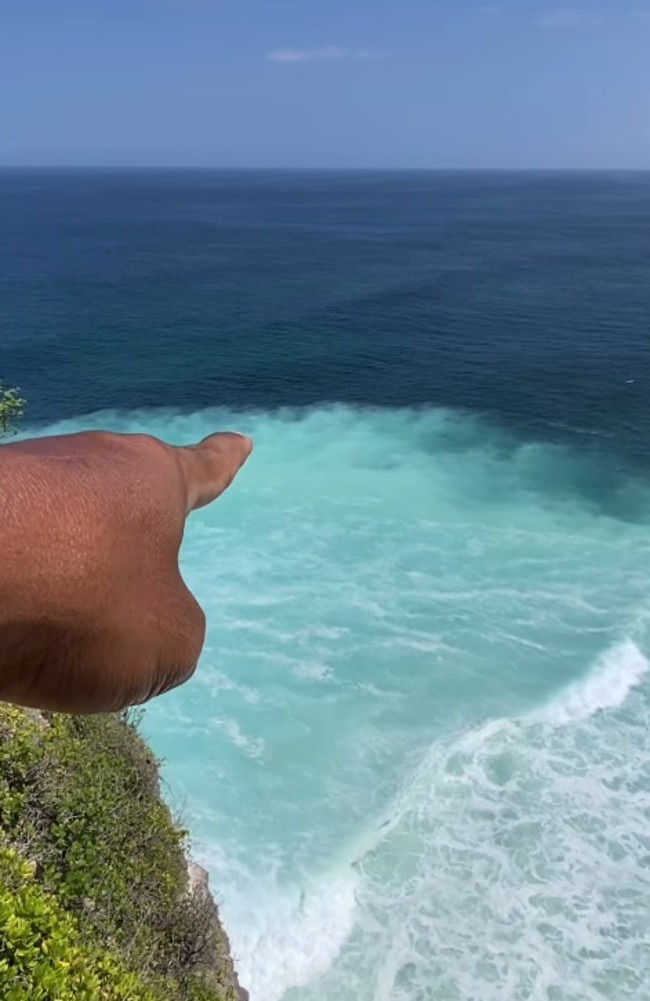
Another clip shows how the limestone has affected the ocean.
“Absolutely devastating, so sad to see this happening in real time. They are destroying one of the most iconic cultural heritage sites, Uluwatu is a sacred zone and this is not only destroying the cliff but also the reef environment below, so horrible,” one person commented.
Another added: “The temple locals are absolutely against the cliffs being destroyed. This is massive destruction of one of the most beautiful and iconic frames of Bali. So sad!”
Meanwhile,
Mariah Langit, co-founder of Emocean.surf, said many of the local Balinese community and the surfers are in deep grief over the project.
“One of the world’s most sacred temples, and sacred waves, hangs in the balance,” she wrote on Instagram.
The management team at Uluwatu Temple has confirmed that tourist visits will not be disrupted by the conservation works on the cliffside that are supporting the temple.
The project is set to be completed in 2025.






